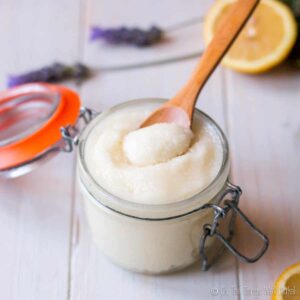[vc_row][vc_column width=”1/2″][vc_column_text]
EXFOLIATION
[/vc_column_text][vc_column_text]Exfoliating is the process of utilising a chemical, granular substance, or exfoliating instrument to remove dead skin cells from the surface of your skin. Every 30 days or so, your skin sheds dead skin cells to create place for new ones. Dead cells don’t always shed fully. Dry, flaky spots and plugged pores might emerge as a result of this. This can be avoided by exfoliating.
Don’t know where to begin? Read on to learn more about the advantages, the distinctions between physical and chemical exfoliation, how to determine your skin type, and more.[/vc_column_text][vc_empty_space][/vc_column][vc_column width=”1/2″][vc_single_image image=”8668″ img_size=”full”][/vc_column][/vc_row][vc_row][vc_column][vc_column_text]
What are the advantages of exfoliating for your skin?
Exfoliating can help your skin look better in a variety of ways. Exfoliation can brighten your skin and promote the absorption of cosmetic skin care products, making them more effective. Exfoliation on a regular basis can also help avoid clogged pores, which means fewer breakouts. Exfoliating for a long time might boost collagen production. Collagen is essential for healthy, bright skin. The protein also improves skin elasticity, which helps to reduce the appearance of fine wrinkles and drooping.[/vc_column_text][vc_empty_space][/vc_column][/vc_row][vc_row][vc_column][vc_column_text]WHAT TO EXPECT FROM PHYSICAL EXFOLIATION
A physical exfoliant is any exfoliating substance or treatment that needs hand scrubbing or rubbing falls. You may already be utilising a physical exfoliator, such as cleansing scrubs, body brushes, or loofahs. Physical exfoliation has the biggest advantage in terms of accessibility. You can do this at home with only a cotton washcloth or a DIY scrub. It also provides quick results. Physical exfoliation can irritate your skin and cause absorption water loss if done wrong. Applying a deep cleansing oil or serum thereafter can help to reduce irritation and lock in moisture.[/vc_column_text][vc_column_text]Materials
There are a few abrasive materials to choose from for manual exfoliation, including:
- cleansing scrubs
- exfoliating mitts
- dry brushes
- loofahs
- pumice stones
- microneedling or micro derma rollers
[/vc_column_text][/vc_column][/vc_row][vc_row][vc_column][vc_column_text]DIY scrubs :
1. You probably already have all of the items you’ll need in your kitchen to produce an excellent DIY scrub.
2. Acids found in sugar and milk, for example, can help exfoliate your skin. Coffee may have antioxidant qualities and increase collagen formation when applied topically. Manuka honey can also help with wound healing, according to research.
Want to try it out? Here are two easy DIY scrub recipes for your face and body.
Café au lait facial scrub
What you’ll need:
½ cup coffee grounds
1 cup brown sugar
2 tsp. milk or buttermilk
1 tsp. honey
What to do:
Add all ingredients to an airtight container and stir well.
Gently splash your face with water or wet your face using a spray mist.
Spread scrub over your face and neck, avoiding your eyes.
Wet your hands and begin gently rubbing the mixture into your skin in a circular motion. Continue for 3-4 minutes.
Rinse off using lukewarm water and pat dry.
Store any remaining scrub in the fridge.
Brown sugar body scrub
What you’ll need:
½ cup coconut oil
¼ cup honey
½ cup brown sugar
3 tbsp. ground oatmeal
What to do:
1. Stir together coconut oil and honey.
2: Add brown sugar and oatmeal. Stir until you’re left with a thick paste.
3: After wetting your skin, gently rub the mixture on your body.
4 : Rinse and pat dry.[/vc_column_text][/vc_column][/vc_row][vc_row][vc_column][vc_column_text]
How to choose products
There are a plethora of over-the-counter (OTC) choices available to you. Scrubs are available for the face, body, and feet. There are other alternatives for various skin types.[/vc_column_text][vc_column_text]When choosing a product, keep the following points in mind:
⦁ Examine the scope of the project. It’s never a good idea to put a body scrub on your face. Scrubs for the body are typically rougher and can rip sensitive facial tissue.
⦁ One product at a time should be used. While it may be easy to purchase a complete collection of treatments, you should only use one exfoliant at a time. Numerous exfoliating solutions applied to the same area of skin might cause damage and unpleasant side effects.
⦁ Change the goods you’re using. As your skin care needs vary, you may need to cycle through different products. For instance, if your skin has gotten oily, consider utilising a charcoal-based treatment.[/vc_column_text][/vc_column][/vc_row][vc_row][vc_column][vc_column_text]WHAT TO EXPECT FROM CHEMICAL EXFOLIATION
To refresh your skin, this technique combines several substances, such as hydroxy acids and retinol, with enzymes.
Chemical exfoliation can produce more dramatic results than DIY and over-the-counter scrubs.
When done poorly, chemical exfoliation, like manual exfoliation, can irritate the skin. Consult a dermatologist or other healthcare expert for advice if you’re unclear how to include a chemical product into your daily routine.[/vc_column_text][/vc_column][/vc_row][vc_row][vc_column][vc_column_text]Alpha hydroxy acids (AHAs)
AHAs are a class of water-soluble acids that are commonly found in sweet fruits. Glycolic acid, derived from sugar cane, and lactic acid, found in milk and pickled vegetables, are two common AHAs.
- Citric acid is a substance present in citrus fruits.
- Apples include tartaric acid, which comes from grapes, and malic acid, which originates from grapes.
These acids aid in the removal of dead skin cells from the surface of the skin, allowing new, more uniformly coloured skin cells to grow in their stead. AHAs may also aid with the following things, depending on the type: Age spots, skin redness, and scars are examples of mild hyperpigmentation, pores that are enlarged fine lines and wrinkles on the skin’s surface unbalanced skin tone
[/vc_column_text][/vc_column][/vc_row][vc_row][vc_column][vc_column_text]Beta hydroxy acids (BHAs)
BHAs, on the other hand, can be dissolved in oil. To clean your pores, these acids penetrate deep into your hair follicles to dry up extra oils and dead skin cells. BHA products are typically used to treat acne and sun damage as a result of this. The most prevalent BHA is salicylic acid. It’s most recognized for treating acne, but it can also assist with redness and inflammation in general.[/vc_column_text][vc_column_text]Retinoids
Vitamin A-derived retinoids are a type of medicine. They’re used to cure acne, soothe sun-damaged skin, and reduce the effects of ageing. They operate by defending your skin from damage and encouraging the creation of collagen. Retinol, adapalene, alitretinoin, tretinoin, bexarotene, and tazarotene are some of the topical retinoids available. The concentration of retinoids varies. Consult a dermatologist if over-the-counter remedies aren’t working. They might be able to recommend a more potent formula.[/vc_column_text][/vc_column][/vc_row][vc_row][vc_column][vc_column_text]
What works best for my skin type?
Exfoliating with the methodical solution for your skin type will reduce irritation and help you obtain the best potential result.
Sensitive
Your skin is deemed sensitive if it hurts or is otherwise irritated after applying new items. Other chemical or physical exfoliants are often more irritating than BHAs. Sensitive skin can be an indication of an underlying illness in some circumstances. If you have eczema or rosacea, you should always consult a dermatologist or other healthcare expert before using new products.
Normal
Normal skin is smooth and tolerant to irritation. Many people with “normal” skin can use any exfoliating technique or product without suffering any negative side effects. It all comes down to personal preference in the end.
Dry
Skin that is dry is flaky or harsh. AHAs like glycolic acid can reach your skin’s surface layer, allowing your moisturiser to better hydrate your new skin cells.
Oily
Oily skin has a greasy appearance and feels. Stronger chemical and physical exfoliators, such as motorised brushes, are often able to be used by people with oily skin. Scrubs from the store or made at home could also be a wonderful choice.
Combination
A combination of oily and dry areas characterises combination skin. You should concentrate on each region separately and switch products as needed.
For example, on oily areas, you might be able to use a chemical exfoliant or scrub one day and a low-level AHA the next[/vc_column_text][/vc_column][/vc_row]
[vc_row][vc_column width=”1/4″][vc_single_image image=”8505″ img_size=”300*300″][/vc_column][vc_column width=”3/4″][vc_column_text]
Salicylic Acid Soap with Kojic Acid, Sulphur, Aloe Vera for Pore Exfoliating, Softening Skin, Brightening, Anti-Blemish, Skin Cleansing, purify pores, Exfoliating
[/vc_column_text][vc_btn title=”Buy Now” link=”url:https%3A%2F%2Fareton-ltd.com%2Fproduct%2Fareton-sali-soap%2F”][/vc_column][/vc_row]

